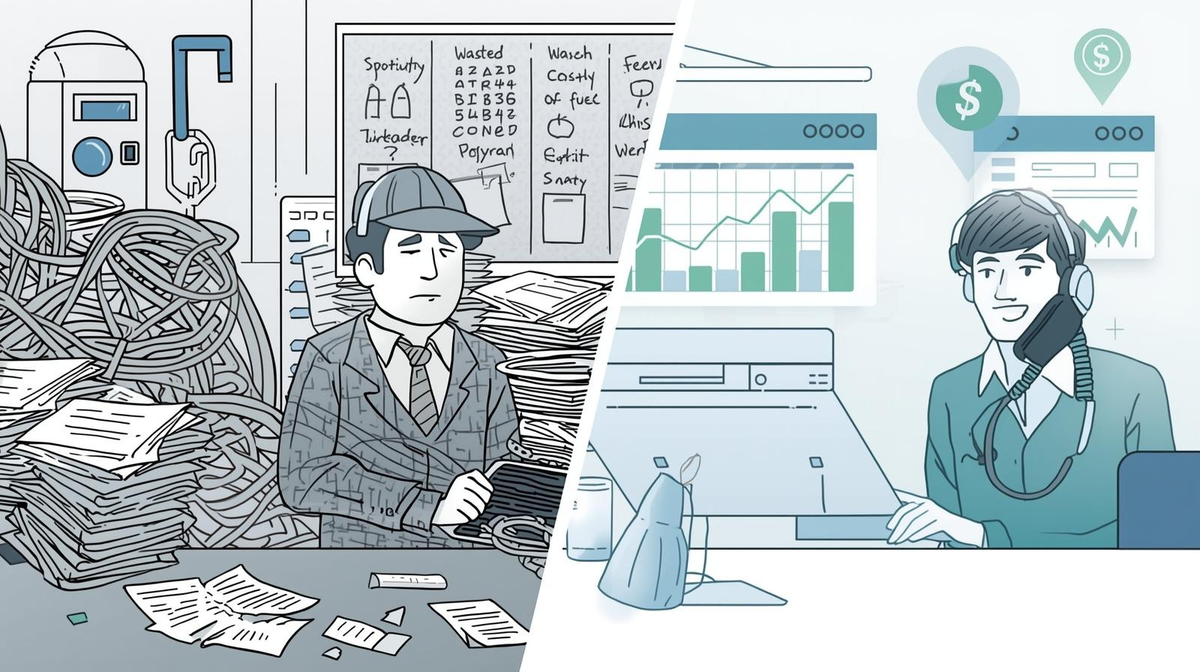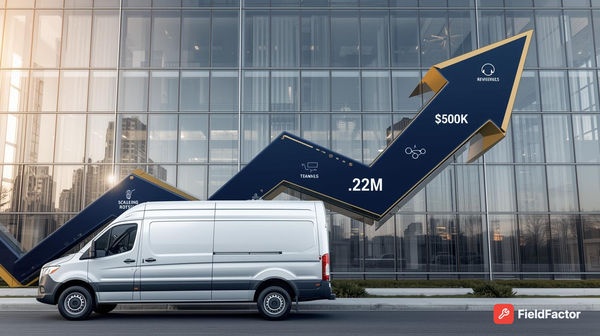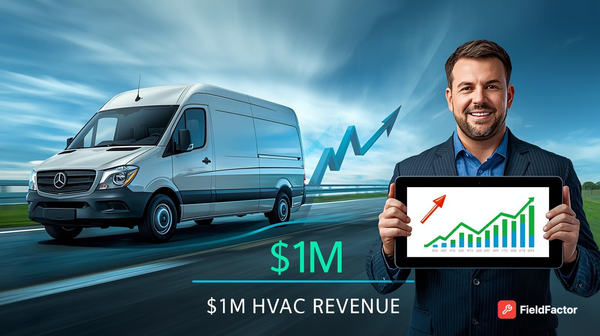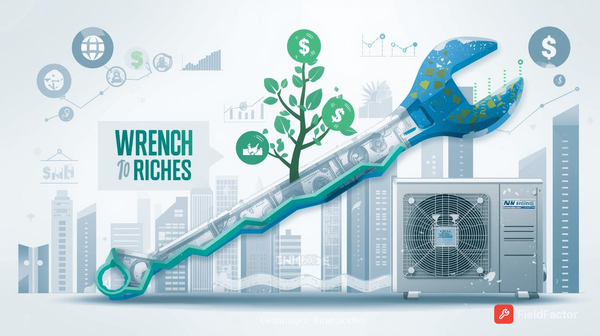Old HVAC Practices That Are Costing You Money
Manual scheduling, phone tag, and reactive repairs are eroding 10–15% of HVAC profits. Find out which outdated practices are costing you $50,000+ annually, and how to fix them today.

The HVAC industry, valued at $30.41 billion in the U.S. in 2023 and projected to grow at 7.4% annually through 2030, faces intense competition and rising operational demands. Yet many businesses still rely on outdated methods that lead to lost revenue, inefficiencies, and missed opportunities—potentially eroding 10-15% of annual profits through hidden costs like unproductive labor and low conversion rates. This guide explores five common legacy practices, their financial impact backed by industry data, and proven strategies to modernize operations for better ROI.
1. Manual Lead Qualification via Phone Tag
The Cost: Follow-up delays and voicemails contribute to 50-70% of leads going cold, with average cost per lead (CPL) at $153 and industry conversion rates hovering around 3.10%. For a business generating 100 leads monthly, this translates to $10,000+ in wasted ad spend and lost opportunities annually.
Why It Hurts: Without structured follow-up, leads based on intuition alone fail to address specific customer needs, such as urgent repairs or seasonal upgrades, resulting in high drop-off before appointments.
Modern Fix: Implement AI-powered voice agents for 24/7 qualification and instant booking. These tools can achieve conversion rates of 40-60% for high-quality leads, far surpassing manual efforts, by using scripted questions to capture intent and schedule visits autonomously.
2. Siloed Scheduling and Dispatch Tools
The Cost: Fragmented systems cause double-bookings and poor routing, adding 15-25% to fuel, labor, and vehicle maintenance expenses—equating to $15,000-$30,000 yearly for a mid-sized firm through unnecessary drive time and technician downtime.
Why It Hurts: Lack of integration hides critical details like job history or urgency, leading to reactive adjustments that disrupt workflows and reduce customer satisfaction.
Modern Fix: Use integrated CRM and dispatch software to create a single dashboard with real-time updates and route optimization. This can cut travel time by 20% and minimize errors, drawing on data-driven predictions for demand based on factors like weather patterns.
| Old Practice | Hidden Cost | ROI from Modern Alternative |
|---|---|---|
| Manual Phone Qualification | $10K+/year in lost leads | 40-60% conversion rates |
| Siloed Scheduling | $15K-$30K/year in inefficiencies | -20% travel time; fewer errors |
3. Generic Marketing Blasts Without Personalization
The Cost: Broad campaigns like mass emails or flyers deliver response rates under 5%, squandering $2,000-$5,000 monthly on ineffective outreach in a market where personalized direct mail boosts responses by 135%.
Why It Hurts: Uniform messaging overlooks diverse customer segments—homeowners seeking efficiency vs. commercial clients focused on compliance—leading to poor engagement and extended sales cycles.
Modern Fix: Shift to targeted campaigns using tools for audience segmentation and A/B testing. Focus on pain points like energy savings, achieving booking rates of 25-30% through data-informed personalization, which aligns with industry benchmarks for digital ads showing 6.5% conversion lifts.
4. Reactive Maintenance Over Predictive Analytics
The Cost: Breakdown-driven repairs incur 25-30% higher expenses due to emergency premiums (2-3x standard rates) and downtime, impacting 10-15% of revenue for typical operations—over $50,000 annually for a $500,000 business.
Why It Hurts: Absence of foresight turns minor issues into crises, straining resources and eroding client trust through unreliable service.
Modern Fix: Deploy IoT sensors and analytics for predictive alerts, reducing emergencies by 35% and yielding 8-12% additional savings over preventive approaches. This strategy forecasts failures from usage data, enabling proactive interventions that extend equipment life and stabilize cash flow.
5. Underutilized Customer Data for Upsell Opportunities
The Cost: Failing to leverage service histories misses 20-30% potential revenue from add-ons like duct cleaning or smart upgrades, forgoing $20,000-$40,000 yearly per team in a sector where upselling directly boosts profit margins.
Why It Hurts: Data trapped in disparate systems prevents timely recommendations, such as during routine visits, limiting cross-sell potential in high-value interactions.
Modern Fix: Automate nurture sequences tied to CRM data for personalized upsell prompts via email or SMS. Post-service surveys can uncover needs instantly, with strategies like seasonal promotions increasing overall revenue by aligning offers with customer lifecycle stages.
| Practice | Annual Cost Estimate | Quick Win Metric |
|---|---|---|
| Generic Marketing | $24K-$60K | +135% response with personalization |
| Reactive Maintenance | $50K+ | -35% emergencies; 8-12% savings |
| Data Silos | $20K-$40K | +20-30% from upsells |
Key Takeaways: Modernize for Sustainable Growth
Transitioning from these legacy practices isn't just about cost-cutting—it's about unlocking efficiency in a $228 billion global HVAC market by 2030. Businesses adopting AI, integrated tools, and data analytics report 20-40% improvements in key metrics like conversions and margins. Begin with a process audit: Identify your biggest leak, test one fix, and scale what works to position your operation for long-term success.





